All aboard the British Royal Train!
Following on from our recent posts about The Blue Train of South Africa and the Mammoth exhibition challenge to re-unite 6 A4 Pacific steam locomotives, our travel blogwriter, Jane, told me that she had recently seen an interesting programme on television about the British Royal Train (see the Footnotes below) and thought it would be a good subject for a post.
This intrigued to me go looking for a bit more information about the history of Royal Trains, and the British train in particular.
It appears that there are, or were, royal trains in many European countries as well as countries such as Ethiopia, South Africa, Japan and Canada. There is more information about these trains here.
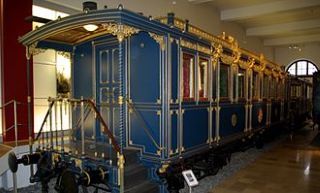
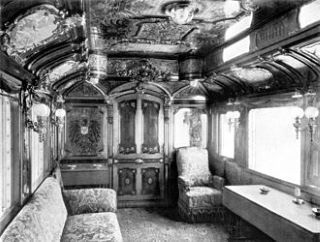
But today we will learn a little bit about the British Royal Train, in a question and answer format.
I was intrigued to discover that a number of the earliest royal carriages are preserved at the National Train Museum in York, England, which was the scene of the celebration in 2013 of the speed record reached by the Mallard in 1938, (and the subject of the Mammoth exhibition challenge post mentioned above).
The National Train Museum in York is a real drawcard for train enthusiasts as the exhibits are so extensive. I loved my visit there in 2001, and would love to go back again one day.
So let's start from the very beginning.......
Who was the first British Royal to travel on a train?
The first member of the British Royal Family to travel by train was the Dowager Queen Adelaide, Queen Victoria’s aunt, who took a train from Nottingham to Leeds (approximately 60 miles) on 22 July 1840. She was the widow of King William IV and was the first member of the British Royal Family to have a carriage made exclusively for her. It was constructed in 1842 by the London and Birmingham Railway and is one of the exhibits on display in the National Railway Museum in York.
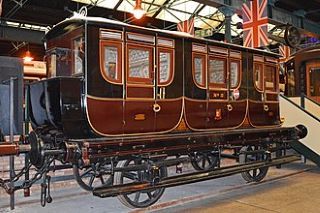
Did Queen Victoria also travel by train?
Queen Victoria was enticed by her husband and consort, Prince Albert, (who liked new inventions and gadgets) to also adopt this mode of travel. Queen Victoria became the first British monarch to travel by train, on 13 June 1842 on the Great Western Railway (GWR), which ran between London Paddington and Windsor, for Windsor Castle. Her train was hauled by the Firefly Class of locomotive, called Phlegethon, driven by Daniel Gooch and assisted by Isambard Kingdom Brunel, the famous engineer and bridge builder, a genius of his time.
The Queen used a royal saloon car which had been constructed by the GWR in 1840. Queen Victoria quite liked this mode of travel, as it allowed her to be seen by the maximum number of her subjects. According to the historian Kate Williams, the Queen "saw this as her duty, whereas monarchs didn't necessarily think that before".1
It also allowed her to travel with some or all of her 11 children. (Many of Queen Victoria’s children and grandchildren married into royalty across Europe, which might explain the popularity of royal trains in Europe, as they were all very familiar with travelling on trains.)
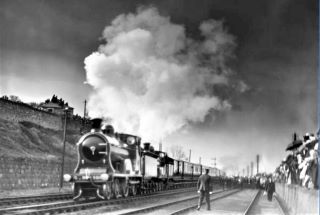
What was it like inside Queen Victoria’s train?
In 1869 Queen Victoria commissioned a private set of train cars which she paid for herself. They were extremely opulent, painted in 23-carat gold and furnished in silks, velvet and satins, including an upholstered ceiling! In the 1890s they were upgraded with electric lighting and an onboard toilet, (which reportedly Victoria refused to use, preferring to have the train stop for her to take bathroom breaks every few hours!) 2
Another carriage had a fully-equipped kitchen and separate dining room. There was a car used as the servants’ quarters and there were special carriages for the royal horses and the royal luggage. Even the royal waiting room at Paddington Station in London was designed like a palace with a marble fireplace, gold painted furniture and glass chandeliers. 2
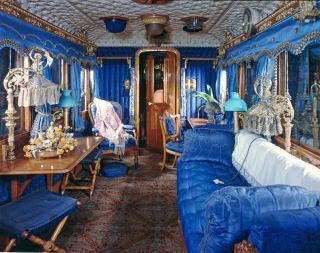
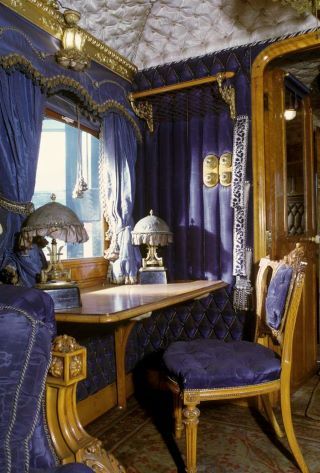
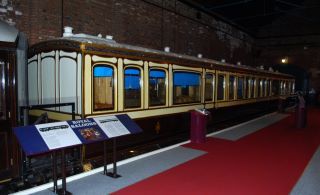
Was the Royal train used in WWI and II?
During WWI, King George V, Queen Elizabeth II's grandfather, used the royal train to travel around the country, and it also served as his accommodation. The train would often spend the night hours hidden in train tunnels for safety. 2
Likewise, his son, King George VI, used it to visit areas of the country that were being bombed by the Germans during WWII. That decision led to a major refurbishment of the train for security reasons, replacing the white-roofed wooden cars with a 56-ton armour plated version filled with security measures, including special cabinets to store top secret documents.2
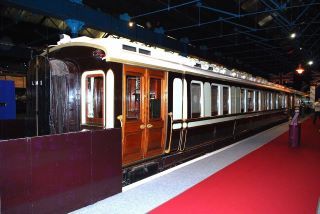
What is the Royal train like inside today?
Unlike Queen Victoria's opulent interiors, the current Royal Train's nine cars are more subdued, and even austere, in their furnishings. Queen Elizabeth’s preferred decorating style is really quite practical, which works well with the limitations of space in train carriages.
The 6 minute video below gives us some insight into the the simple furnishings of the Royal Train today - almost looking like IKEA in its blonde, Scandinavian style, don't you think!!
Who uses the Royal Train today?
There have been other modernisations and refurbishments since WWII, and in 1977, to celebrate her Silver Jubilee, the Queen was presented with the current version of the Royal Train.
Normally the Royal train is reserved for just the senior royals – the Queen, the Duke of Edinburgh (before his retirement and death), and the Prince of Wales and the Duchess of Cornwall. Any any other travellers or media are by invitation only! It consists of nine carriages: The Queen's 75 foot carriage, consisting of lounge, bedroom, and bathroom; the Duke of Edinburgh's lounge, bedroom, and bathroom; the Prince of Wales's sleeping car; the Prince of Wales's saloon; the Royal Household sleeping car; Royal Family dining car with kitchen; Royal Household dining car with kitchen; and other cars containing diesel generators, brake van and the like.2
Prince William and Catherine used the train for the first time in December 2020 for a morale-boosting official tour of thanks, during the pandemic.
Whilst Meghan, the Duchess of Sussex, was invited to accompany the Queen on the train on an official visit, it seems Prince Harry is yet to be invited on board!
There is some controversy today about the cost to the public purse of running the Royal Train. It is very expensive compared to air travel, and may explain why the train is only used a few times a year nowadays.
Did both steam and diesel locomotives pull the Royal Train?
Initially steam trains hauled the Royal train, the first being Phlegethon in the Firefly Class, mentioned above.
Did you know that "The Princess Elizabeth", (No. 46201) and "The Princess Margaret Rose", (No. 46203), built in 1935, were two steam locomotives named after the young Princesses? The latter of these is still on static display at the Midlands Museum in Derbyshire.
At some stage in the early 1960s diesel locomotives replaced the steam trains. Did you also know that there were two diesel trains named "Prince William" and "Prince Henry", after the two Princes, though both engines were retired in 2004. 3
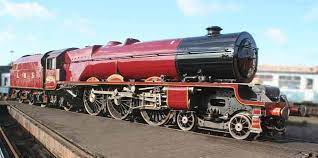
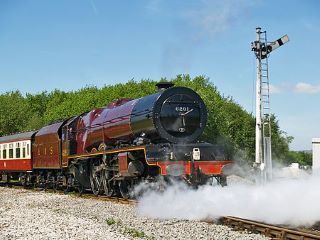
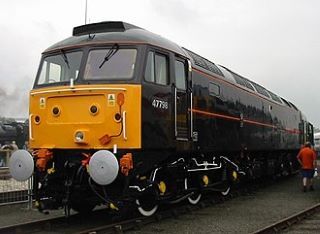
Currently there are two Class 67 diesel locomotives which haul the royal train: the 67006, “Royal Sovereign", and 67005 – “The Queen’s Messenger,” both decorated in the royal claret livery. They are run on environmentally friendly bio-fuel made from waste vegetable oil.3
A third Class 67 – 67026 – Diamond Jubilee – which features silver livery, a union flag and a Diamond Jubilee logo, was used during the 2012 celebrations.3
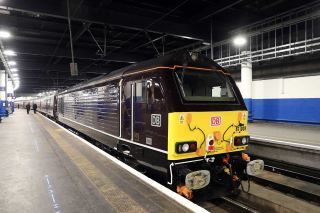
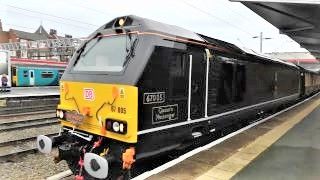
Footnotes
With thanks to
- Wikipedia
- Town and Country.com
- therailwayhub.co.uk
You can watch the 50 minute programme Secrets of Royal Train Travel on YouTube if you click here.
